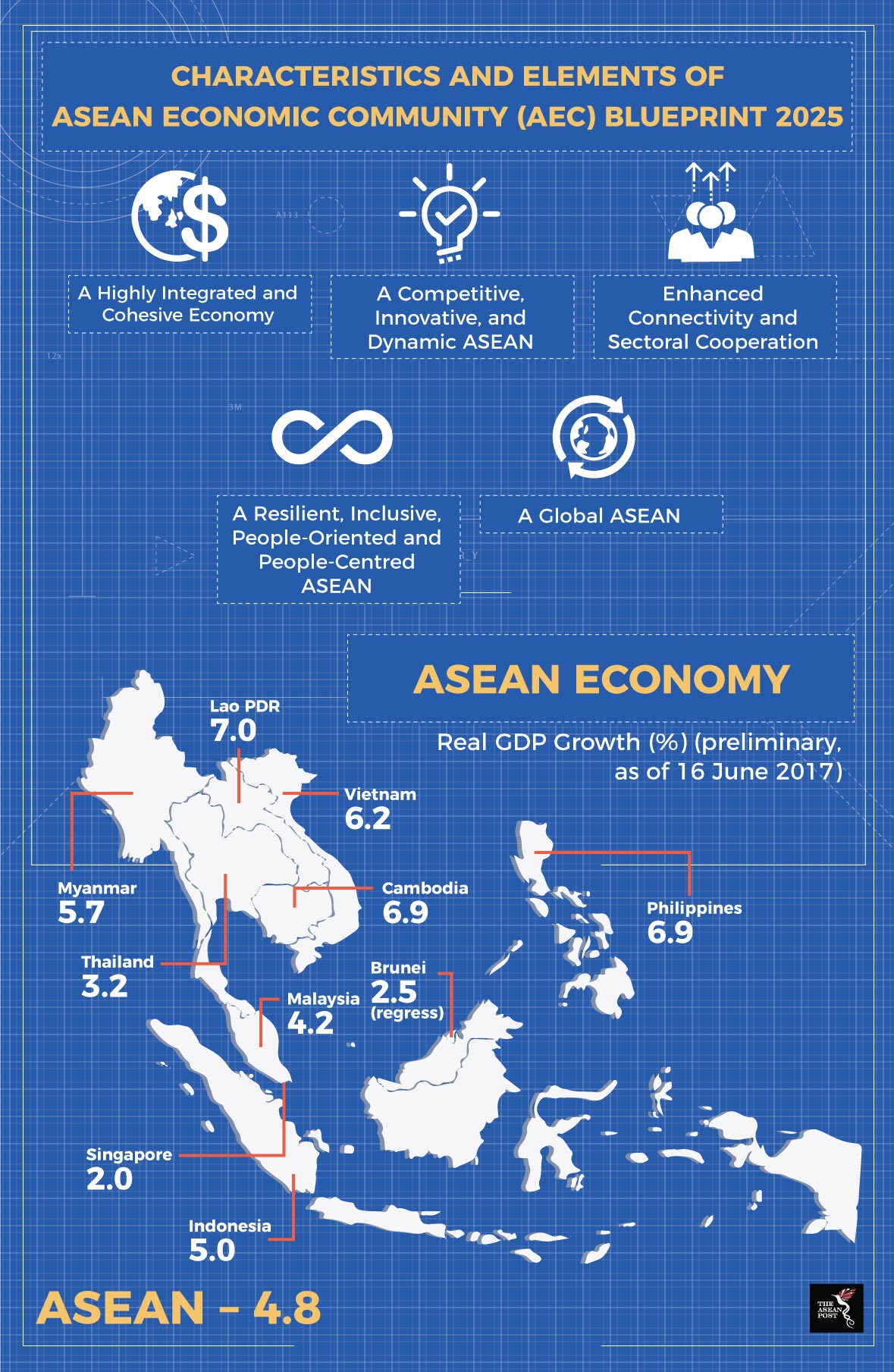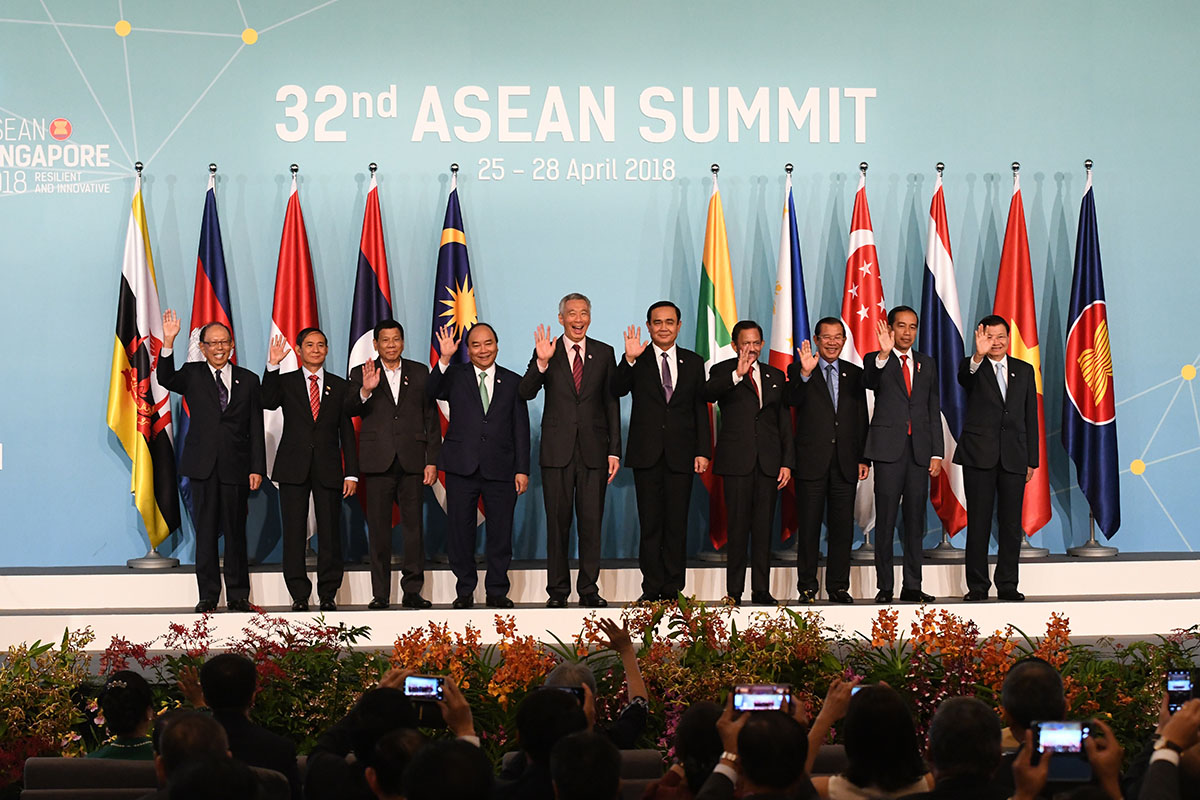While calling to mind a broken record, the constant extolling of the ASEAN economic framework by external parties is warranted. The establishment of the ASEAN Economic Community (AEC) in 2015 has opened up numerous business opportunities for the regional community with its vision of ASEAN as a single market and production hub characterised by the free flow of goods, services, and investments, as well as a more liberal movement of capital and skills. It must be pointed out that the ASEAN Financial Crisis in 1997 is seen as a lesson in management by ASEAN.
Rather than having 10 separated economies, ASEAN is moulding a single market that will allow investors to increase their market reach to a total of 600 million people. This is a stark contrast to the maximum of 240 million if investors are to explore the market of a single ASEAN member state.
ASEAN’s agreement on trade in goods has evolved from the Common Effective Preferential Tariff (CEPT) to a more concise ASEAN Trade in Goods Agreement (ATIGA). The reduction of trade costs is an important point that has been established by the AEC. This is done through the simplification of cross-border trading processes, including customs procedures and rules of origin, and the harmonisation of technical regulations as well as mutual recognition arrangements. In addition, a strong and competitive services sector facilitates industrial development, efficiency and innovation.
Through subsequent rounds of negotiation under the ASEAN Framework Agreement on Services (AFAS), ASEAN has persisted in broadening coverage and reducing limitations on market access. The next step is to ease negotiations and implementation of the ASEAN Trade in Services Agreement (ATISA) as the legal instrument for further integration of the services sector across Southeast Asia.
Another pivotal achievement by the AEC is the establishment of a more attractive investment regime. ASEAN member states have adopted common frameworks and standards which facilitate mutual cooperation in multiple areas. Added to this is the fact that there is better connectivity in transportation and other infrastructure networks, enabling trade to take place at a faster pace. This is conducted without undermining the quality and “human touch” of any given transaction.

Source: ASEAN Secretariat
Impact of a digital economy
Against the backdrop of the Fourth Industrial Revolution, the digital economy has been embraced by many ASEAN countries, if not all. Based on a joint study by AT Kearney, a leading global management consulting firm, and Axiata, a Malaysian telecommunications conglomerate, ASEAN’s digital economy currently generates about US$150 billion in revenue annually. The largest share of revenue comes from connectivity and online sales, each accounting for 35 to 40 percent of overall revenue.
An emphasis on the digital economy also creates new industries such as mobile financial services, big data analytics, cyber-security solutions, and transport services. The widespread adoption of e-commerce and mobile financial services have also boosted the growth of local business activities in the region, which is in line with the ASEAN Economic Blueprint 2025.
It is estimated that the ASEAN digital economy will be valued at US$200 billion by 2025 with, e-commerce accounting for US$88 billion. A substantial portion of the latter would likely come from Chinese e-commerce behemoths, Tencent and Alibaba. Both have carried out large investments in start-ups based in Southeast Asia.
The use of the internet will help entrepreneurs gain access to new markets as well as construct new businesses. Moreover, if ASEAN has successfully transformed itself into a global digital powerhouse, it could potentially generate an additional US$1 trillion to the region’s GDP by 2025.
The pursuit of economic growth and development through regional economic integration must revolve around the welfare of the people, with sustainability being at the centre and not merely an afterthought. If the ASEAN community is not taken care of, a dynamic and vibrant economy will only have a semblance of meaning. Therefore, it is imperative that ASEAN member states are aware of this balance. It is hoped that the governments of Southeast Asia can work hand-in-hand in advancing the economy without neglecting the well-being of its people.
